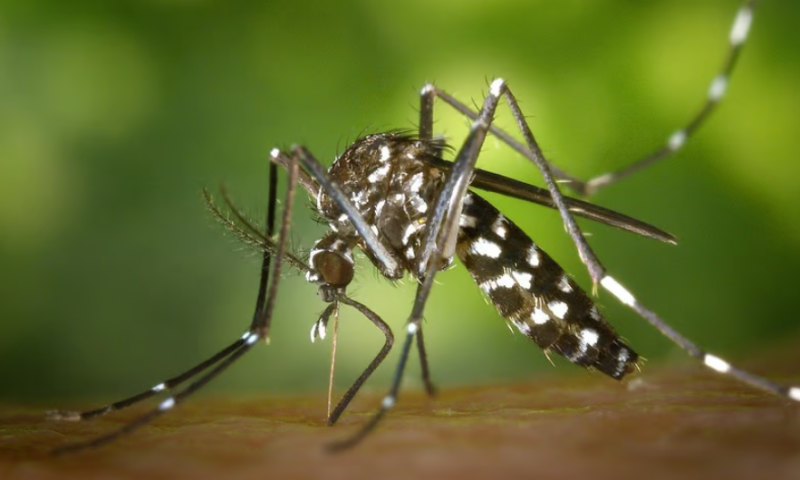Preventing malaria infection from turning into disease is one thing, but preventing transmission between mosquitoes and humans in the first place is another. Now, scientists have discovered a strain of bacteria that may be able to do just that.
In a paper published Aug. 3 in Science, researchers from GSK and Johns Hopkins University showed that a naturally occurring bacterium called Delftia tsuruhatensis Tres Cantos 1—TC1 for short—can lower the amount of malaria in mosquitoes. The finding could eventually add another weapon to GSK’s anti-malaria arsenal, which so far includes the world’s only widely used malaria vaccine, Mosquirix, and its antimalarial tafenoquine, trade name Krintafel.
“[TC1] … has the potential to further reduce the huge burden of malaria in endemic countries and is more evidence that through deploying a range of preventative approaches, we may be able to finally eradicate this terrible disease,” GSK Chief Global Health Officer Thomas Breuer, M.D., said in a press release.
The discovery came about through an observation at GSK’s research and development site in Tres Cantos, Spain. Scientists noticed that one of their mosquito colonies was gradually growing resistant to infection by Plasmodium falciparum, the form of the parasite responsible for the bulk of malaria deaths. After noticing that their environment was rich in TC1, the researchers conducted a proof-of-principle study which showed that the bacteria were inhibiting the parasite’s development for at least 16 days after colonizing the mosquito’s gut.
To figure out exactly how the bacteria was blocking the parasite, the researchers infected blood with TC1 and P. falciparum, then fed it to mosquitoes. When they dissected them 22 hours later, they noticed that there were few P. falciparum ookinetes, or embryos. This meant that the bacteria was suppressing the parasite at a very early stage, the team concluded.
Next, the researchers isolated the specific weapon the bacteria were deploying: a chemical called harmane, a potent neurotoxin in high doses. Further experiments showed a negative dose-response relationship between the levels of harmane or TC1 in the blood fed to mosquitoes and P. falciparum ookinete formation.
They took their work to the MosquitoSphere in Burkina Faso, where they ran two field tests: one where they placed cotton balls soaked in a suspension containing sugar and TC1 overnight in the mosquitoes’ habitat and another where the reared mosquito larvae to adulthood in water seeded with the bacteria. Around 75% of the mosquitoes from the cotton ball experiment took up the bacteria, while all of the adult mosquitoes that grew up in the contaminated environment were colonized by them.
In another set of experiments, the researchers captured mosquitoes from homes near the MosquitoSphere and left them in the environment with the soaked cotton balls. They then fed them blood from local patients who were infected with P. falciparum. The mosquitoes were able to suppress the parasite at an efficacy rate of about 74%.
The results suggest the possibility of using the bacteria like a pesticide in places where malaria is endemic. Insecticides have long been used as a malaria control strategy (though not without controversy). But mosquitoes frequently develop resistance, as exposure to the chemicals drives the evolution of insects that can withstand them.
TC1 has characteristics that reduce that possibility, the researchers noted. For one, it doesn’t kill the mosquito—it just blocks the malaria-causing parasite within them from developing. And many fewer parasites develop in the mosquito than in humans to begin with, so they’re less likely to develop ways to overcome the bacteria there.
“Since it does not target malaria in the human host, where parasite numbers may [be very high], the development of parasite resistance in the mosquito … is minimized,” they wrote.
Still, the notion of releasing TC1 into the environment raises other concerns. What’s the cost to the rest of the ecosystem? And how does the bacterium affect humans?
First, strains of D. tsuruhatensis occur naturally in many different ecosystems, the researchers noted in their paper, including freshwater, saltwater, soil and within other insect species. A product based on the bacteria is already sold as a soil additive for soybeans, “supporting its potential for safe release in the environment,” the scientists wrote. The team is currently investigating the persistence and spread of the bacterium in the MosquitoSphere as well conducting studies to understand how it impacts non-target organisms, like bees, GSK spokesperson Kathleen Quinn told Fierce Biotech Research in an email.
As for the bacteria’s impact on humans, it has been reported as an opportunistic pathogen in a hospital setting, where it caused severe symptoms in immunocompromised people with underlying conditions. But in the context of being used as a pesticide, it’s unlikely to be transmitted to humans in the first place, at least by the mosquitoes: Experiments showed that when mosquitoes harboring TC1 bit mice, they didn’t transfer the bacteria into them, as it wasn’t present in their saliva.
The team will run further safety studies on both people and the environment once a final product configuration has been established, Quinn said. GSK will be part of the research on safety, efficacy and manufacturing scalability, but, eventually, it would be ideal for a third party to come in and take the product further, she added.

